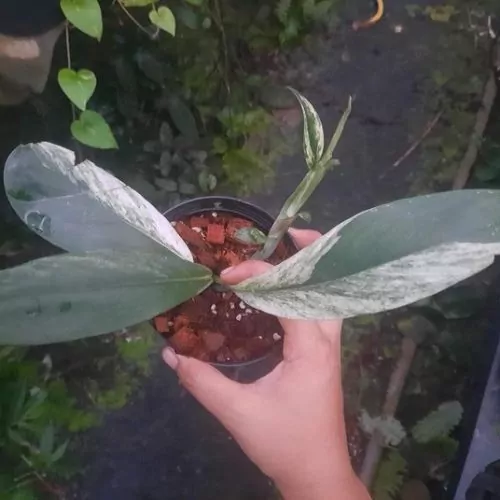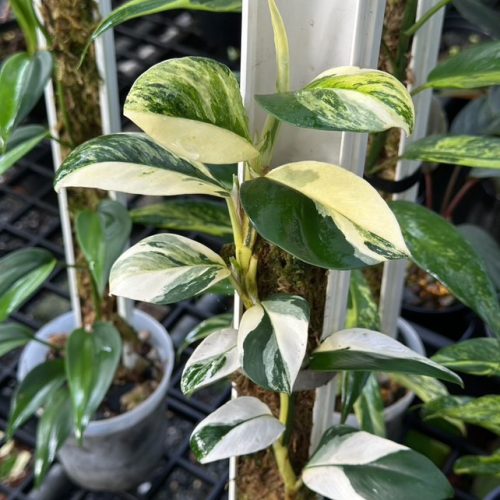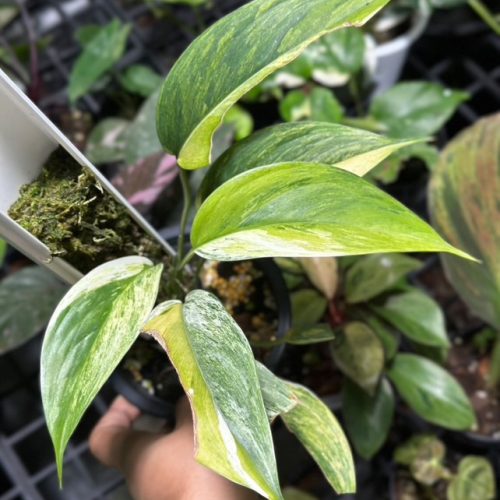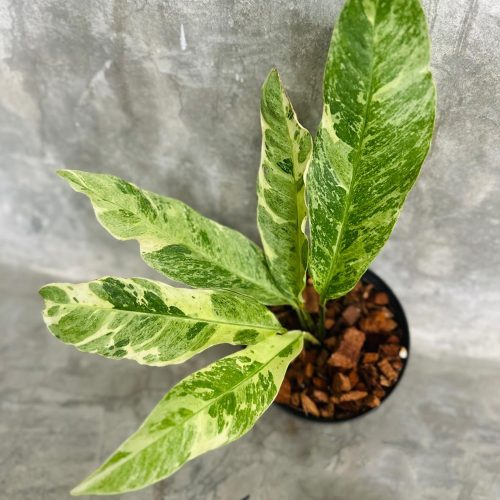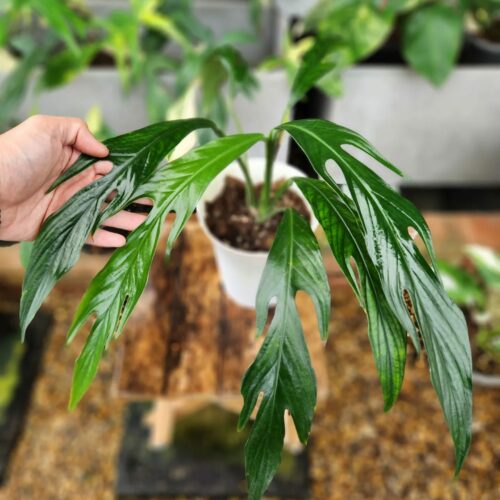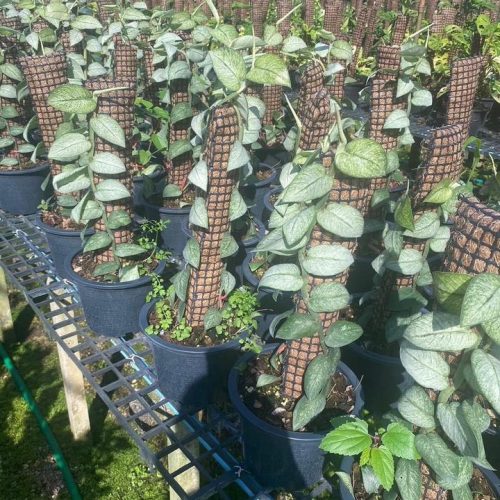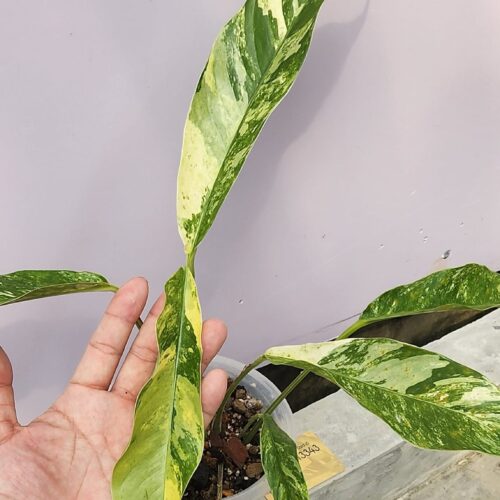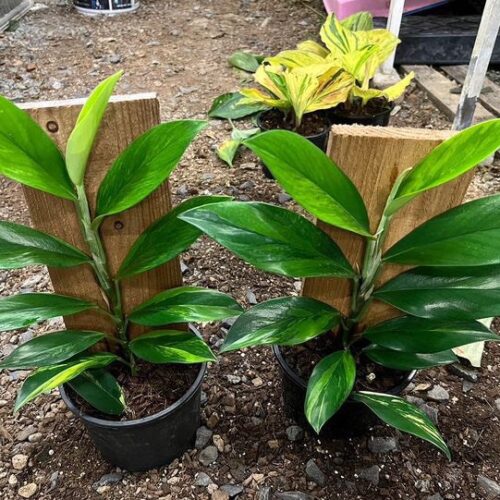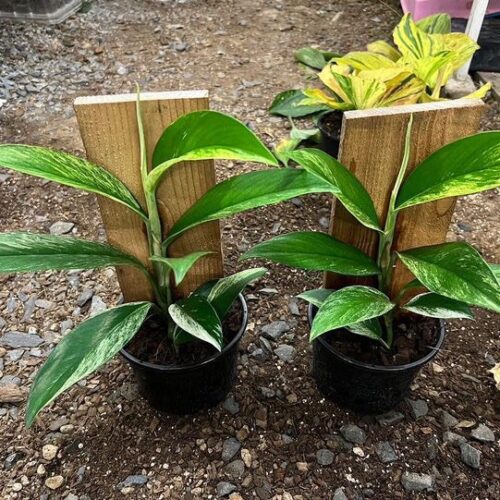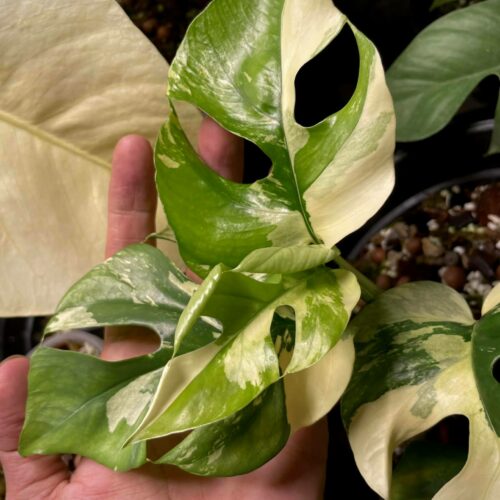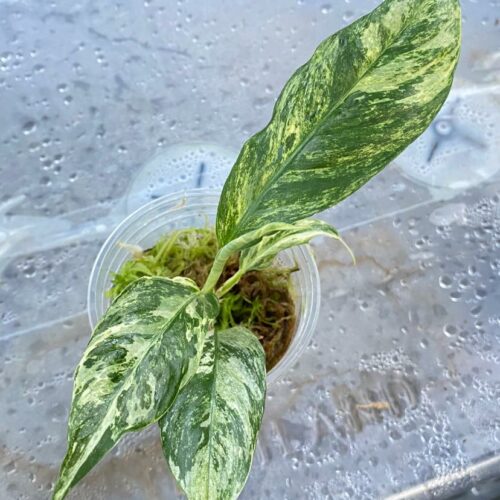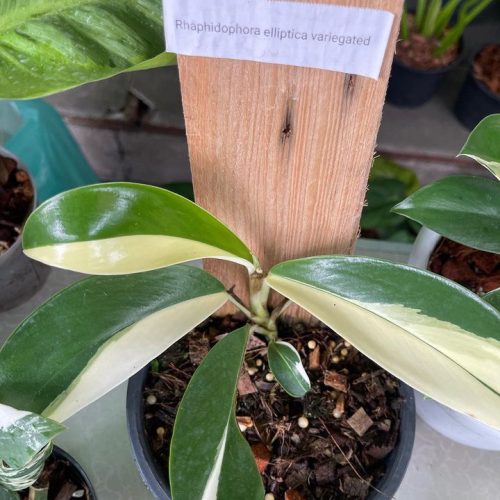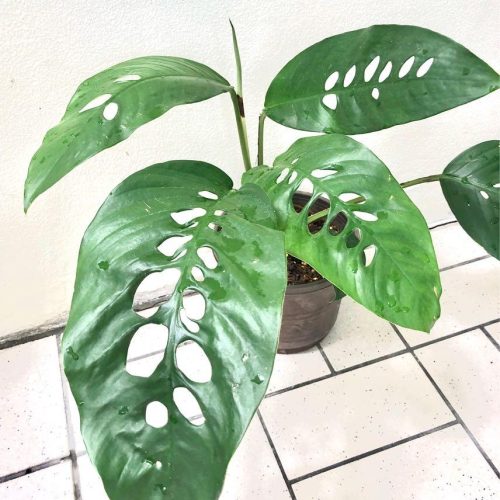The Rhaphidophora Beccarii, also known as the Shingling Plant or Creeping Philodendron, is a tropical climbing vine that is gaining popularity as an indoor houseplant. With large perforated leaves and an aggressive growing habit, this plant makes a great addition to any home. Here are 5 easy steps for successfully growing and caring for Rhaphidophora Beccarii.
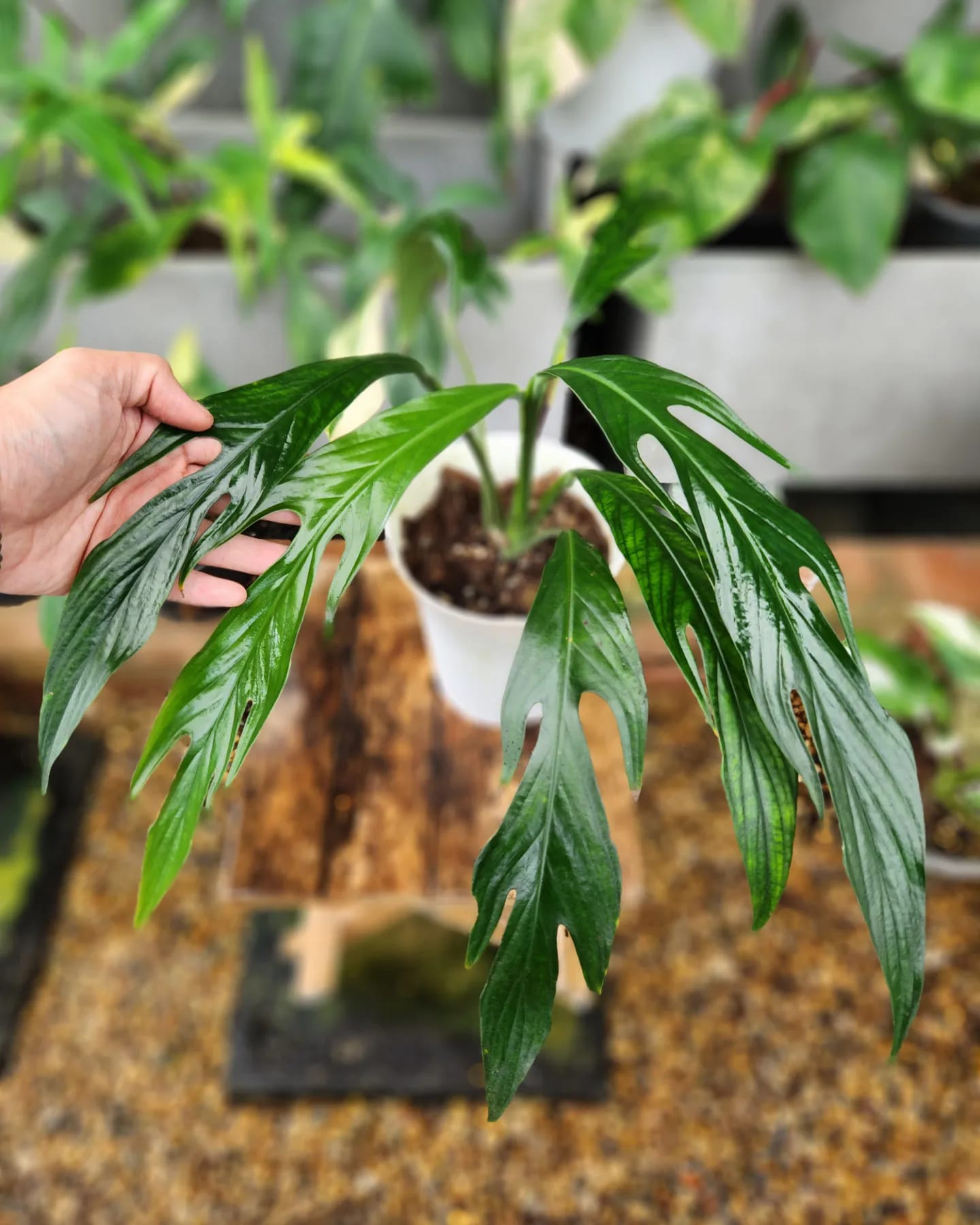
1. Provide Bright, Indirect Light
Rhaphidophora Beccarii thrives best in bright, indirect light. It enjoys some direct morning or late afternoon sun but should be protected from intense midday light.
East or West Facing Windows
Situate your Beccarii plant near an east or west facing window. These locations will give your plant adequate levels of light without scorching the leaves. You may notice faster growth rates and larger fenestrations in brighter light conditions.
Artificial Supplemental Lighting
If natural light is limited, provide artificial supplemental lighting for 12-14 hours per day. LED grow lights work exceptionally well. Position the lights 12-18 inches above your Beccarii and adjust intensity based on growth.
“For more details on the ideal lighting conditions for your Rhaphidophora Beccarii, check out our in-depth guide, Discover the Fascinating World of Rhaphidophora Varieties, which includes information on various Rhaphidophora species and their specific light needs.”
2. Maintain Average Room Temperatures
Rhaphidophora Beccarii prefers average room temperatures between 65-80°F. Growth may slow in cooler temperatures. Leaves can burn if exposed to hot air vents or drafty areas.
Monitor for Cold Damage
Inspect plant leaves and stems regularly during winter months for signs of cold damage like yellowing, necrosis spots, or dropped leaves. Move plants away from cold windows or drafts promptly to prevent further damage.
Provide Gentle Air Circulation
Use circulating fans to gently distribute air without blasting plants directly. Air movement strengthens plant tissues and helps leaves dry out, preventing fungal or bacterial leaf diseases.

3. Water Thoroughly and Allow Soil to Dry
Beccarii plants like an evenly moist but not wet soil. Water thoroughly until it drains freely from the drainage holes whenever the top inch becomes dry. Allow the soil to mostly dry out before watering again.
Add Pebbles to Saucer
Place pebbles in the saucer under your pot to prevent the plant sitting in water. Stagnant water can cause root rot and other harmful plant diseases.
Adjust Watering Frequency
Water more often in brighter, hotter conditions. Reduce watering frequency in winter or darker locations. Get to know your plant’s needs in order to determine the best watering schedule.
“Understanding the watering needs of your Rhaphidophora Beccarii is crucial. Learn more about proper watering techniques in our article, 5 Best Soil Types To Grow Rhaphidophora At Home, which also discusses the importance of well-draining soil.”
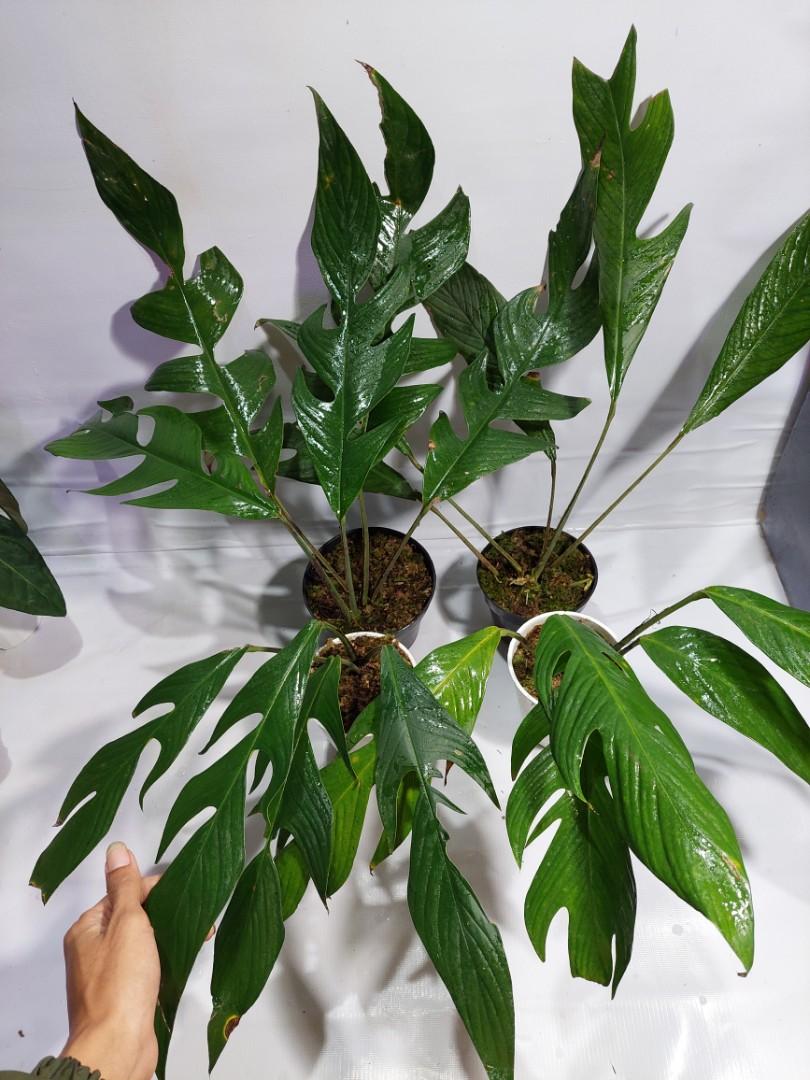
“Bring Home the Beauty of Rhaphidophora Beccarii Today! Discover the elegance and charm of Rhaphidophora Beccarii for your space. Elevate your indoor jungle with this stunning plant. Shop now and make your home a green oasis!”
4. Increase Humidity Levels
Rhaphidophora Beccarii thrives best in 60-80% relative humidity. In dry indoor environments, increase humidity around your plant by misting the leaves daily or using a humidifier nearby.
Group Houseplants Together
Situate your Beccarii amongst other houseplants. As the plants transpire water from their leaves, they increase humidity levels naturally for each other.
Use Pebble Trays
Place the pot on top of a pebble tray filled with small rocks and water. As the water evaporates from the tray, it creates a humid microclimate around the foliage.
“To find out more about the humidity preferences of Rhaphidophora and how to create an ideal environment for them, refer to our detailed overview, Discover the Fascinating Rhaphidophora: A Comprehensive Overview.”
5. Provide a Sturdy Support Structure
In their native tropical habitats, Rhaphidophora Beccarii use tree trunks, branches, and rock surfaces as support structures to climb upwards into the forest canopy. Provide a mossy post, coconut coir pole, or trellis in the pot for young climbing stems to attach aerial roots to.
Guide New Growth
Gently tie new trailing stems to the support using soft plant ties or velcro strips. This helps train stems to grow upwards as they mature. Remove ties as stems adhere themselves.
Consider Weight Factors
Position larger support structures on plant dollies with wheels for easy moving. As the Beccarii matures, the weight increases substantially and can cause pots to tip over.
Where to buy Rhaphidophora Beccarii? Benefits from importing plants from Thailand
- Shipping: Door to door shipping, fast and safe with Dragon Courier
- Biodiversity: Thailand is known for its rich biodiversity, including a wide variety of aroid species. This diversity allows importers to access a broad range of unique and exotic aroid plants.
- Quality and Health of Plants: The suitable climate helps the plants grown here stay healthy and of high quality.
- Cost-Effectiveness: Due to favorable growing conditions and efficient production methods, Thai aroid plants can often be more cost-effective compared to those from other countries.
- Access to Hybrid Varieties: Thai growers are often involved in the development of new hybrid aroid varieties, offering unique plants that may not be available from other sources.
Rhaphidophora species are the most sought after by aroid plant lovers
Conclusion
With these 5 essential care tips, you’ll have all the know-how you need to successfully grow Rhaphidophora Beccarii indoors. This tropical vine is sure to add intrigue and drama to any living space as is climbs tall supports and develops monumental perforated leaves. With the right growing conditions, your Beccarii will thrive for many years as an impressive houseplant specimen.
“For a comprehensive understanding of Rhaphidophora Beccarii and related species, don’t forget to explore our extensive document, Discover the Beauty of Rhaphidophora Family Plants, which offers insights into the diverse world of this plant genus.”
FAQ
- What is Rhaphidophora Beccarii?
- Rhaphidophora Beccarii is a tropical plant species known for its attractive, heart-shaped leaves and vining growth habit. It is a member of the Araceae family and is popular among indoor plant enthusiasts.
- How do I care for Rhaphidophora Beccarii?
- To care for Rhaphidophora Beccarii, provide it with bright, indirect light, well-draining soil, and regular watering. It thrives in a humid environment and benefits from occasional misting. Keep it away from direct sunlight and drafts.
- Is Rhaphidophora Beccarii safe for pets?
- Rhaphidophora Beccarii is generally considered non-toxic to pets like cats and dogs. However, it’s still best to keep an eye on your pets to ensure they don’t nibble on the plant’s leaves, as some animals may have sensitivities.
- How can I propagate Rhaphidophora Beccarii?
- You can propagate Rhaphidophora Beccarii through stem cuttings. Simply take a healthy stem cutting with a few leaves and place it in water or potting mix until it develops roots. This plant is known for its ease of propagation.
- What are common issues and pests that affect Rhaphidophora Beccarii?
- Rhaphidophora Beccarii may encounter issues such as yellowing leaves (overwatering or too much sunlight), brown leaf tips (low humidity or underwatering), and mealybugs or spider mites (common pests). Regularly inspect your plant for signs of problems and take appropriate measures to address them.

